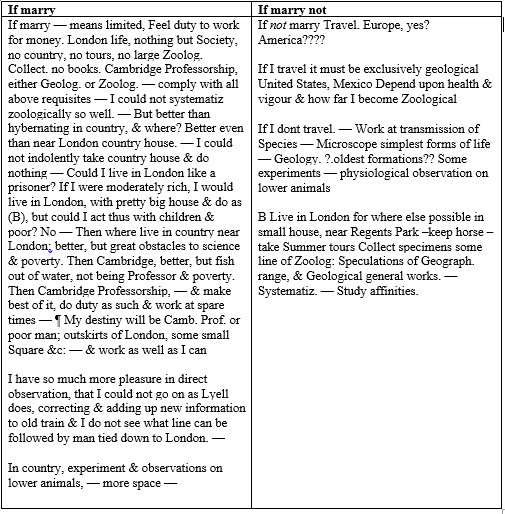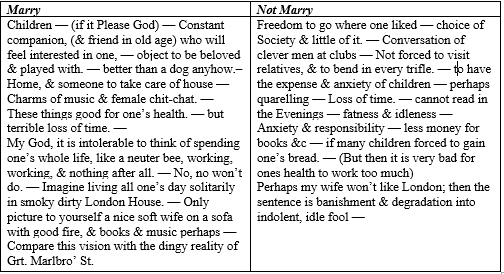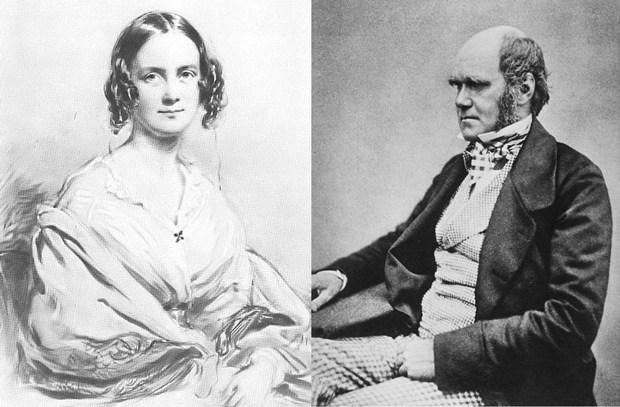It seems Charles Darwin used to follow “Balance Sheet Close and Decision Making”, a technique used when making tough decisions. Charles Darwin once wrote“The day of days!” on his diary after his cousin Emma Wedgewood accepted his marriage proposal. Interestingly, few months before this momentous day, he had inscribed a list of pros and cons regarding marriage. Mostly the first list was concerned with the effect the marriage would have on his work.
The initial list:

The second list,

His conclusion,
Marry — Mary — Marry Q.E.D*
After this, he moves to the next question.
It being proved necessary to Marry
When? Soon or Late
The Governor says soon for otherwise bad if one has children — one’s character is more flexible –one’s feelings more lively & if one does not marry soon, one misses so much good pure happiness. —
But then if I married tomorrow: there would be an infinity of trouble & expense in getting & furnishing a house, –fighting about no Society –morning calls –awkwardness –loss of time every day. (without one’s wife was an angel, & made one keep industrious). Then how should I manage all my business if I were obliged to go every day walking with my wife. — Eheu!! I never should know French, –or see the Continent –or go to America, or go up in a Balloon, or take solitary trip in Wales –poor slave. –you will be worse than a negro — And then horrid poverty, (without one’s wife was better than an angel & had money) — Never mind my boy — Cheer up — One cannot live this solitary life, with groggy old age, friendless & cold, & childless staring one in ones face, already beginning to wrinkle. — Never mind, trust to chance –keep a sharp look out — There is many a happy slave —
Of course, he eventually married and they had 10 children together.
References:
The Correspondence of Charles Darwin, Volume 2: 1837-1843 1st Edition by Charles Darwin.
*QED- is an initialism of the Latin phrase “quod erat demonstrandum” meaning “what was to be demonstrated” or “what was to be shown.” Some may also use a less direct translation instead: “thus it has been demonstrated.”(Wikipedia)

